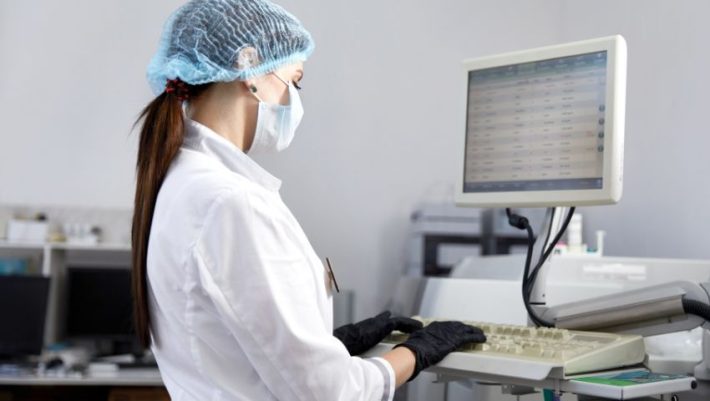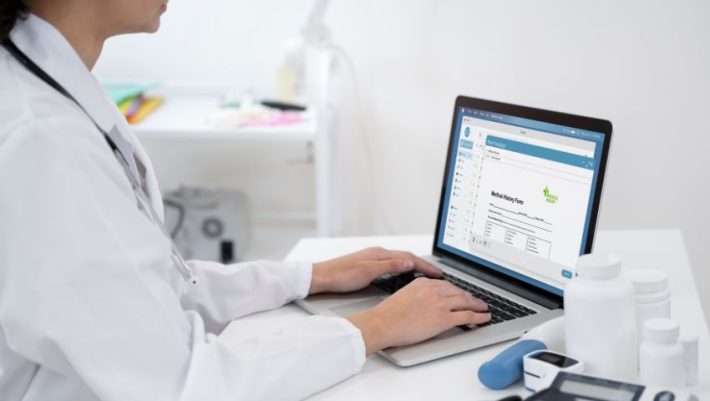The Role of Multi-Device Access in Enhancing Patient Engagement

Table of Contents
Introduction
What Is Multi-Device Access in Healthcare?
Why Patient Engagement Matters
Benefits of Multi-Device Access for Patients
How It Improves Clinical Workflows
Key Technologies Supporting Multi-Device Use
Customer Testimonial
FAQs
Conclusion
References
Introduction
The role of multi-device access in enhancing patient engagement is growing rapidly in modern fertility care. By allowing patients to access records, messages and updates on phones, tablets and desktops, clinics are transforming how care is delivered. This flexibility boosts communication, improves treatment understanding and empowers patients to stay actively involved.
What Is Multi-Device Access in Healthcare?
Multi-device access allows healthcare systems to work seamlessly across smartphones, tablets, laptops and desktops. Whether a patient is reviewing lab results on their phone or a doctor is updating records on a tablet, the same data is available in real time. This removes location and device barriers to communication and care.
Why Patient Engagement Matters
Engaged patients are more likely to follow treatment plans, attend appointments and ask informed questions. In fertility care, where timing and adherence are critical, keeping patients updated across devices reduces confusion. Empowered patients experience better outcomes and are more satisfied with their care experience.
Benefits of Multi-Device Access for Patients
Patients gain numerous benefits through multi-device access:
- View test results and treatment updates anytime.
- Access instructions and consent forms remotely.
- Receive reminders and alerts on their mobile device.
- Message doctors without being at the clinic.
- Participate more actively in decision-making.
This accessibility builds trust and helps reduce stress.
How It Improves Clinical Workflows
For clinics, multi-device systems reduce friction in workflows:
- Staff can update records from any device.
- Doctors review cycles or notes during rounds.
- Labs and nurses stay coordinated in real time.
- Fewer delays from paper or single-terminal dependencies.
- Faster follow-up actions and better documentation.
It enhances both efficiency and the patient experience.
Key Technologies Supporting Multi-Device Use
- Cloud-based patient management platforms for central data access.
- Mobile-optimized portals for patients and staff.
- Secure messaging apps for real-time communication.
- Role-based login systems to protect sensitive data.
- EMR-integrated apps for instant updates across care teams.
These tools drive safe, scalable device flexibility in fertility care.
“The future of healthcare belongs to systems that adapt to patients, not the other way around.” — Dr. Karen DeSalvo, Former National Coordinator for Health IT
📱 Multi-device access = more control for patients. Real-time updates, reminders and communication on the go. #PatientEngagement #FertilityCare
— Conceive X (@conceive_x) April 21, 2025
Customer Testimonial
“Before using ConceiveX, our patients relied on calls and paper notes. Now they access everything—from cycle charts to billing—on any device. Engagement and satisfaction have both improved.” — Dr. Alisha Menon, Program Head, Bloom Fertility Network
How Patients Benefit
- Access care information 24/7
- Get alerts for medication or appointments
- Share concerns without visiting the clinic
- Reduce missed steps or misunderstandings
- Feel more confident and connected
Clinic Steps to Enable Multi-Device Access
- Adopt a cloud-based system with role-level access.
- Ensure patient-facing tools work on all devices.
- Provide easy login and onboarding support.
- Train staff on using multiple interfaces.
- Gather patient feedback and adapt features.
Table: Traditional vs Multi-Device Patient Engagement
| Feature | Traditional Engagement | Multi-Device Engagement |
| Record Access | In-clinic only | Any device, any time |
| Communication | Phone calls, in-person | Secure in-app messaging |
| Instructions & Updates | Paper forms | Digital, real-time alerts |
| Patient Confidence | Moderate | High, due to transparency |
| Flexibility | Limited | High, cross-device access |
FAQs
What is multi-device access in healthcare?
It means patients and providers can securely access and update medical data using any device.
How does it improve patient engagement?
It keeps patients informed and connected through alerts, updates and self-service tools.
Is this approach secure?
Yes, using encryption, user permissions and secure login ensures full data privacy.
Do clinics need new infrastructure?
Most modern platforms like ConceiveX are cloud-based and easy to implement.
Can patients use mobile phones only?
Yes. Phones, tablets and desktops are all supported for flexible access.
What about older patients?
Simple portals and onboarding support help make access user-friendly for all age groups.
Conclusion
Multi-device access strengthens patient engagement by improving communication, reducing confusion and supporting active participation. Clinics that adopt this approach can provide more responsive, satisfying care.
ConceiveX enables multi-device access for patients and fertility teams. From secure mobile portals to synchronized clinical dashboards, our IVF Software helps you improve communication, build trust and keep every patient actively involved—anytime, anywhere.




